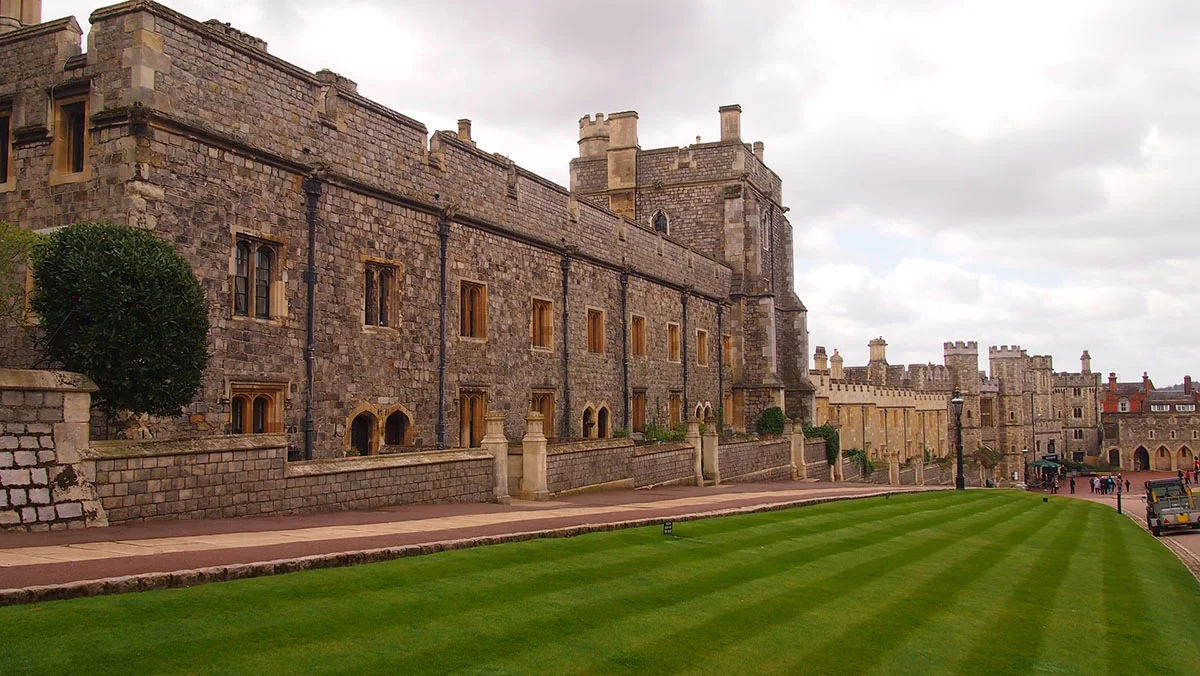 |
Windsor Castle is still the current seat of the British royal family and is listed in the Guinness Book of Records as the largest inhabited castle in the world. The building has come a long way from a wooden military building to one of the most famous and beautiful palaces. At various times, Windsor Castle has become the embodiment of the architectural fantasies of many monarchs with completely different tastes. It has changed almost throughout its history, influenced by a wide variety of styles from medieval romanticism to neo-Gothic. What is this architectural ensemble today, and what is the history of its creation?
 |
| Windsor Castle |
Windsor Castle was founded in 1070 by William I on a hill in the Thames Valley 30 kilometers from London. It was originally a wooden fortress surrounded by a stone wall. A little later, to the east of the hill, an additional wall of wood was erected (now the Upper Courtyard is located in its place), and by the end of the century, a similar wall was erected near the western slope of the hill, where the Lower Courtyard is now located. Later, all these buildings were repeatedly rebuilt, but the layout itself has survived to our times - two four coal buildings (courtyards), and in the middle there is a round tower on a hill.
 |
| Windsor Castle |
Despite the fact that already in the first half of the 12th century, Windsor Castle was completely stone, until the reign of Edward III, who ascended the throne in 1327, the building was not a full-fledged residence of the royal family. From 1350 to 1377, Edward III spent on reconstruction an unprecedented amount at that time - 51,000 pounds. He decided to make Windsor Castle the new Camelot.
Here he also founded a new knightly order - the Order of the Garter. It was under Edward III that the Chapel of St. George (Saint George's Chapel) with lancet windows and colored stained glass, which is one of the main buildings of the English Gothic. Among other things, the chapel is decorated with the "royal menagerie" - 76 heraldic statues, each of which has an important symbolic meaning: the bull represents courage, the griffin - vigilance, the unicorn - strength, the swan - grace and perfection. Windsor Castle itself was also reconstructed during this period under the influence of the Gothic style, the roofs and windows of most buildings were altered accordingly.
 |
| Windsor Castle |
The next important stage in the transformation of Windsor Castle took place from 1660 to 1683, during the reign of Charles II. In an effort to restore the greatness of the monarchy, Charles II ordered the reconstruction of Windsor Castle in the Baroque style and hired the architect Hugh May. As a result, the castle acquired the features of the richest royal palace.
 |
| Windsor Castle |
Windsor Castle acquired its modern appearance in the 19th century, during the reign of George IV. His ambitious plan was to transform Windsor Castle from a mix of many styles into a harmonious Gothic ensemble. For this, the smooth walls were decorated with battlements, loopholes, pointed arches and various statues. The round tower, which is at the center of the architectural composition, was raised 9 meters to look even more majestic. Thus, George IV embodied his romantic dream of how a medieval castle should look like. However, when decorating the interiors, he took a completely different path - according to his idea, each hall had to personify a certain style: Gothic, Classicism, Rococo, etc.
 |
| Windsor Castle |
And finally, the last major restoration of Windsor Castle was not dictated by conceptual design, but by necessity after a major fire in 1992. During the restoration, the project of George IV was taken as a basis.
 |
| Windsor Castle |
Today Windsor Castle is not a museum; it still houses one of the royal family's residences. Elizabeth II lives here for about a month in the spring and a week in June. The rest of the time, the castle is open to tourists. Each year, Windsor Castle, which covers approximately 5 hectares, is visited by more than a million tourists. And this is not surprising, because the castle is an architectural symbol of the greatness of the British monarchy, the inviolability of its traditions. Another thing is surprising - with such a symbolic meaning, Windsor Castle was transformed more often than any other building in Foggy Albion, and it was transformed under the influence of the most progressive architectural trends.